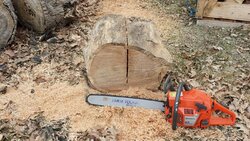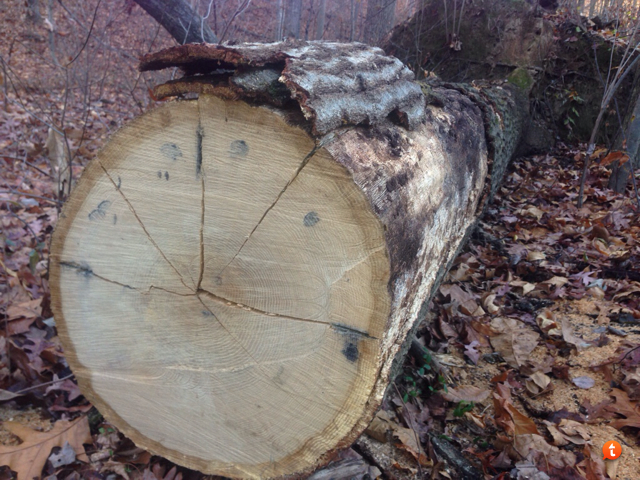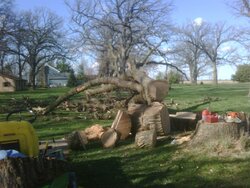I keep hearing these two terms and REALLY, REALLY, REALLY want some clarification.
Now this is my understanding of noodling
Long strings of wood come out of the chip port.
But some folks talk like they use a standard chain for this. In the comments, he mentions a chain with a 5 - 10 degree angle (as opposed to the standard 30).
I know several on here noodle their big wood (sorry that sounds dirty ), but how? Do you use a special chain?
), but how? Do you use a special chain?
If you use a standard chain, then what is ripping?
From this video, he describes a ripping chain (like for a saw mill).
I have some oak that is gonna come out to 350 - 400 lbs per round. The tree is off the ground on other small trees that it crushed and I have considered "noodling" at the end, then cross cutting, then noodling, then cross cutting........basically cutting each round in half before I cut it off the tree. Before I try anything, I would love a better explanation from those who have learned the hard way (so I don't have to )
)
Now this is my understanding of noodling
Long strings of wood come out of the chip port.
But some folks talk like they use a standard chain for this. In the comments, he mentions a chain with a 5 - 10 degree angle (as opposed to the standard 30).
I know several on here noodle their big wood (sorry that sounds dirty
 ), but how? Do you use a special chain?
), but how? Do you use a special chain?If you use a standard chain, then what is ripping?
From this video, he describes a ripping chain (like for a saw mill).
I have some oak that is gonna come out to 350 - 400 lbs per round. The tree is off the ground on other small trees that it crushed and I have considered "noodling" at the end, then cross cutting, then noodling, then cross cutting........basically cutting each round in half before I cut it off the tree. Before I try anything, I would love a better explanation from those who have learned the hard way (so I don't have to
 )
)



